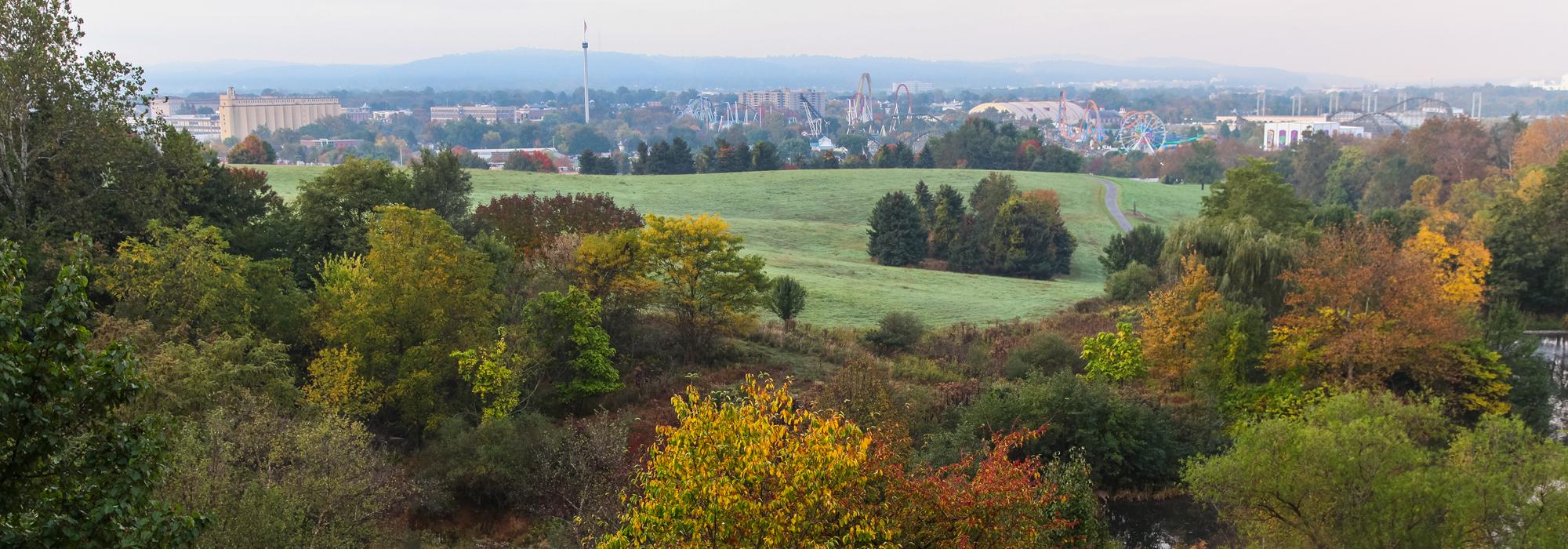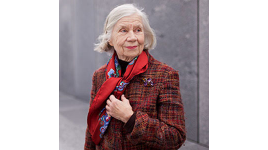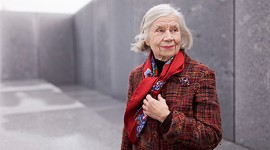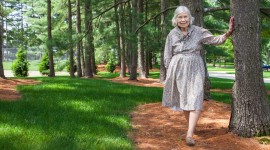Harriet Pattison Biography
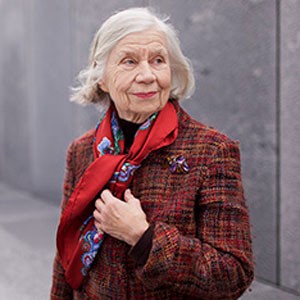
Born on October 29, 1928, Harriet Pattison was the youngest of William Lawrence and Bonnie Abbott Pattison’s seven children. She attended Chicago’s progressive Francis Parker School and graduated from the University of Chicago’s College with a B.A. in 1951. She hoped to study set design at Yale University’s School of Drama, but was enrolled in the actors' program. While at Yale, Pattison elected to take Josef Albers’ color theory course, learning lessons which she described as lifelong. She then worked in film, attended a landscape painting program at Chicago’s Art Institute, and spent two terms in graduate studies in philosophy at the University of Edinburgh in 1954.
Settling in Philadelphia to study piano with Edith Braun, Pattison befriended architect Robert Venturi, who introduced her to Louis Kahn in 1958. Kahn became a pivotal force in Pattison’s life both personally and professionally: in 1962, Pattison bore Kahn’s only son, Nathaniel. It was during this period that Pattison realized that her talents and arts background were suited to landscape architecture. Later commenting on her choice of profession, Pattison wrote: “When I see how Nature welcomes the gardens and landscapes I have begun, and how they enhance people’s lives, I rejoice in following a distinguished tradition of artists who unite human and natural forces in harmony.”

Pattison began a year-and-a-half-long apprenticeship in the Vermont office of Dan Kiley in 1963. Kiley’s work, a strain of Modernism heavily influenced by his appreciation for landscapes of 17th-century French master Andre Le Nôtre, laid the foundation for Pattison’s own oeuvre. Beginning formal studies in the field, Pattison matriculated to a three-year program in landscape architecture studying under Ian McHarg at the University of Pennsylvania’s School of Fine Arts. Prior to her graduation there in 1967 with an M.L.A., she was exposed to and influenced by the writings of J.B. Jackson and the teachings of visiting critic Roberto Burle Marx, distinguished faculty Sir Peter Shepheard and botanist John Fogg.
Pattison’s first position was in the office of landscape architect George Patton, where she stayed until 1970. From the outset, Pattison was given major design responsibilities in the firm’s various projects, from playgrounds to estate design. Pattison also collaborated with Kahn on a number of projects, including the grounds for the Kimbell Art Museum in Fort Worth, Texas. Pattison’s love of nature nurtured Kahn’s own interest in landscape and setting, and she considered herself a “companion for his thoughts.” The culmination of their collaborative work was the design for the Franklin Delano Roosevelt Memorial in Four Freedoms Park, on the southern tip of Roosevelt Island in New York’s East River. First awarded in 1973, the project design underwent a number of iterations in the year before Kahn’s sudden death. The final design paired allées of trees and a 100-foot-wide granite stairway reminiscent of that at Versailles with a wide lawn which tapers to a large, bronze bust of Roosevelt. Lying just beyond is an open-air, three-sided, ‘room’ with 12-foot-high, granite walls that frame a wide ‘window’ onto expansive views of the river and the city skyline. Kahn’s design for the memorial, shelved for three decades, was resuscitated and built as a park which opened in 2012. Pattison’s close involvement with the architect on all aspects of the memorial design can be seen through the sketches and drawings for the project, many bearing the mark of both their hands.
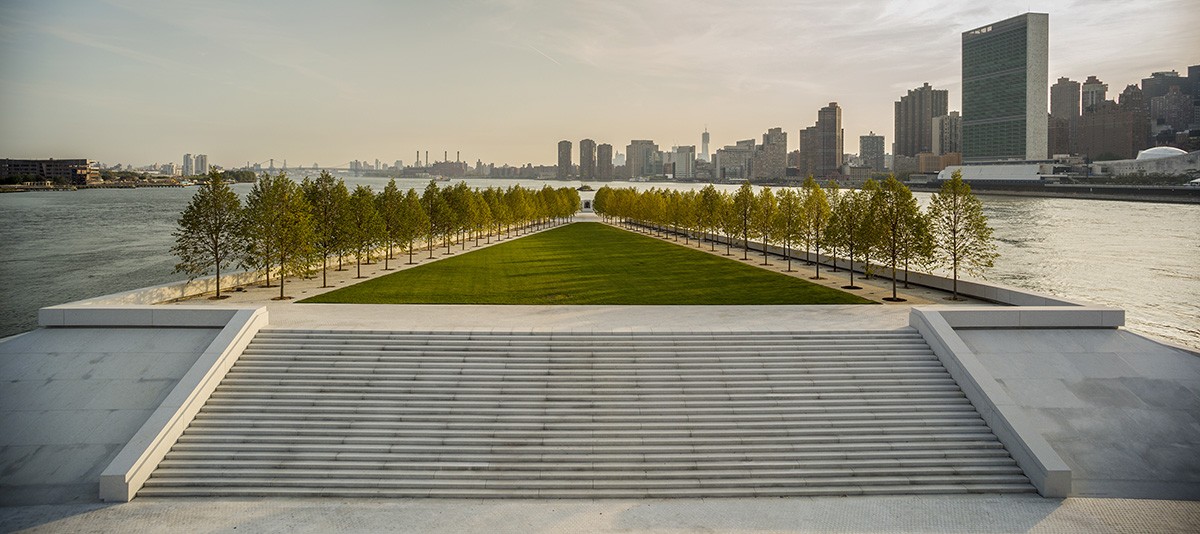
Following Kahn’s death, Pattison opened her own landscape architectural office while continuing to collaborate with George Patton on occasional projects. Her work ranged from intimate garden designs to large-scale, institutional commissions, including the master plan for the Hershey Food Corporation’s Pennsylvania headquarters.
Having worked with masters of architectural and landscape design in a period when the minimalism of modernity was tempered with an appreciation for historical context, Pattison’s own work reflects this sensitivity. An appreciation for history and historic preservation is revealed in her writings, including her essay, Maine Landscapes: Design and Planning, in which Pattison explores the pioneering work of Beatrix Farrand. As a woman working in a male-dominated profession, Farrand, alongside Gertrude Jekyll, figured as role-models for Pattison. Like them, Pattison’s extant works, numerous in the Mid-Atlantic area, ensure that her subtle hand has been engraved on our collective landscape. In 2016 she was inducted as a Fellow of the American Society of Landscape Architects. In October 2020, during the height of Covid, Harriet published, Our Days Are Like Full Years: A Memoir with Letters from Louis Kahn.
Pattison died on October 2, 2023 at the age of 94.
Bibliography
Ashraf, Kazi Khaleed. “Taking Place: Landscape in the Architecture of Louis Kahn.” Journal of
Architectural Education, 61: 2 (2007) 48-58.
Brownlee, David B. and David G. De Long, Louis I. Kahn: In the Realm of Architecture NY:
Rizzoli, 1991.
Edge, Kay F. “Harriet Pattison, ASLA.” In International Archive of Women in Architecture
Newsletter, Virginia Polytechnic Institute and State University, No. 18 (Fall 2006) 1-2.
Hughes, Samuel. “Constructing a New Kahn.” The Pennsylvania Gazette (March/April 2013)
36-49.



